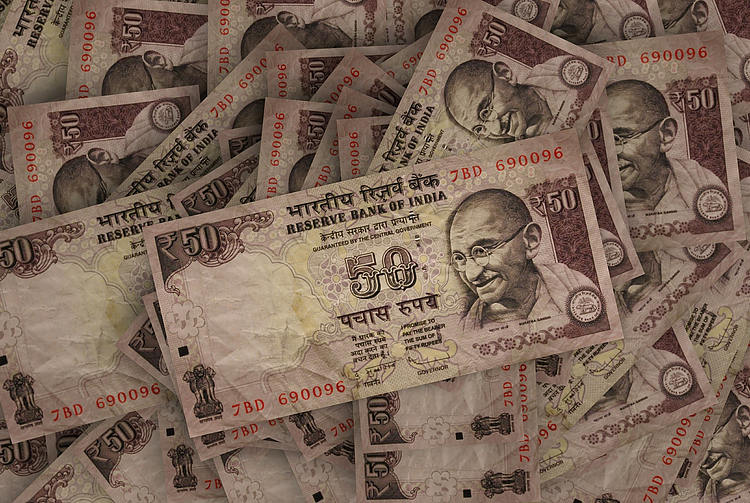- Indian Rupee gathers strength in Wednesday’s Asian session.
- Improved risk appetite and a weakening USD support the INR.
- Investors await the US August New Home Sales and Fed’s Kugler speech on Wednesday.
The Indian Rupee (INR) edges higher on Wednesday. Improved risk appetite following China’s stimulus measures and the softer US Dollar (USD) boost the local currency on the day. Nonetheless, rising crude oil prices, outflows related to a rejig of the FTSE equity indexes and renewed USD demand from large Indian importers might exert some selling pressure on the INR.
The US New Home Sales data for August is due on Wednesday. Traders will take more cues from the US Federal Reserve’s (Fed) Governor Adriana Kugler speech. Any dovish remarks from the Fed officials are likely to weigh on the Greenback against the Indian Rupee. The highlight for this week will be the US August Personal Consumption Expenditures (PCE) Price Index data, which will be published on Friday.
Daily Digest Market Movers: Indian Rupee remains firmer amid a global risk-on mood
- S&P Global Ratings on Tuesday retained India’s Gross Domestic Product (GDP) growth forecast at 6.8% while noting that the Reserve Bank of India (RBI) may cut interest rates in October.
- “We expect the rupee to trade with a positive bias amid improved global risk appetite following China’s stimulus and softness in the dollar. However, elevated crude oil and other commodity prices may cap sharp upside,” noted Anuj Choudhary, Research Analyst at Sharekhan by BNP Paribas.
- The Conference Board’s US Consumer Confidence Index dropped to 98.7 in September from a revised 105.6 in August. This figure registered the biggest decline since August 2021.
- Fed Governor Michelle Bowman said on Tuesday that key measures of inflation remain “uncomfortably above” the 2% target, warranting caution as the Fed proceeds with cutting interest rates. However, she preferred the Fed to lower by a quarter percentage point, more in line with the traditional moves at the central bank.
- The markets have priced in nearly 56% odds of a second 50 bps rate cut in the November meeting, while the chance of 25 bps stands at 44%, according to the CME FedWatch Tool.
Technical Analysis: USD/INR’s negative view remains unchanged in the longer term
The Indian Rupee trades on a stronger note on the day. The negative outlook of the USD/INR pair prevails as the price remains capped under the key 100-day Exponential Moving Average (EMA) on the daily chart. The downward momentum is supported by the 14-day Relative Strength Index (RSI), which stands below the midline near 36.00.
The first downside target for the pair emerges at 83.44, the low of September 23. A breach of this level will see a drop to the crucial support level at 83.00, representing the psychological level and the low of May 24.
Sustained trading above the 100-day EMA at 83.62 could pave the way to the support-turned-resistance level at 83.75. The key barrier for USD/INR is located at the 84.00 round mark.
RBI FAQs
The role of the Reserve Bank of India (RBI), in its own words, is ‘..to maintain price stability while keeping in mind the objective of growth.” This involves maintaining the inflation rate at a stable 4% level primarily using the tool of interest rates. The RBI also maintains the exchange rate at a level that will not cause excess volatility and problems for exporters and importers, since India’s economy is heavily reliant on foreign trade, especially Oil.
The RBI formally meets at six bi-monthly meetings a year to discuss its monetary policy and, if necessary, adjust interest rates. When inflation is too high (above its 4% target), the RBI will normally raise interest rates to deter borrowing and spending, which can support the Rupee (INR). If inflation falls too far below target, the RBI might cut rates to encourage more lending, which can be negative for INR.
Due to the importance of trade to the economy, the Reserve Bank of India (RBI) actively intervenes in FX markets to maintain the exchange rate within a limited range. It does this to ensure Indian importers and exporters are not exposed to unnecessary currency risk during periods of FX volatility. The RBI buys and sells Rupees in the spot market at key levels, and uses derivatives to hedge its positions.
Read the full article here

